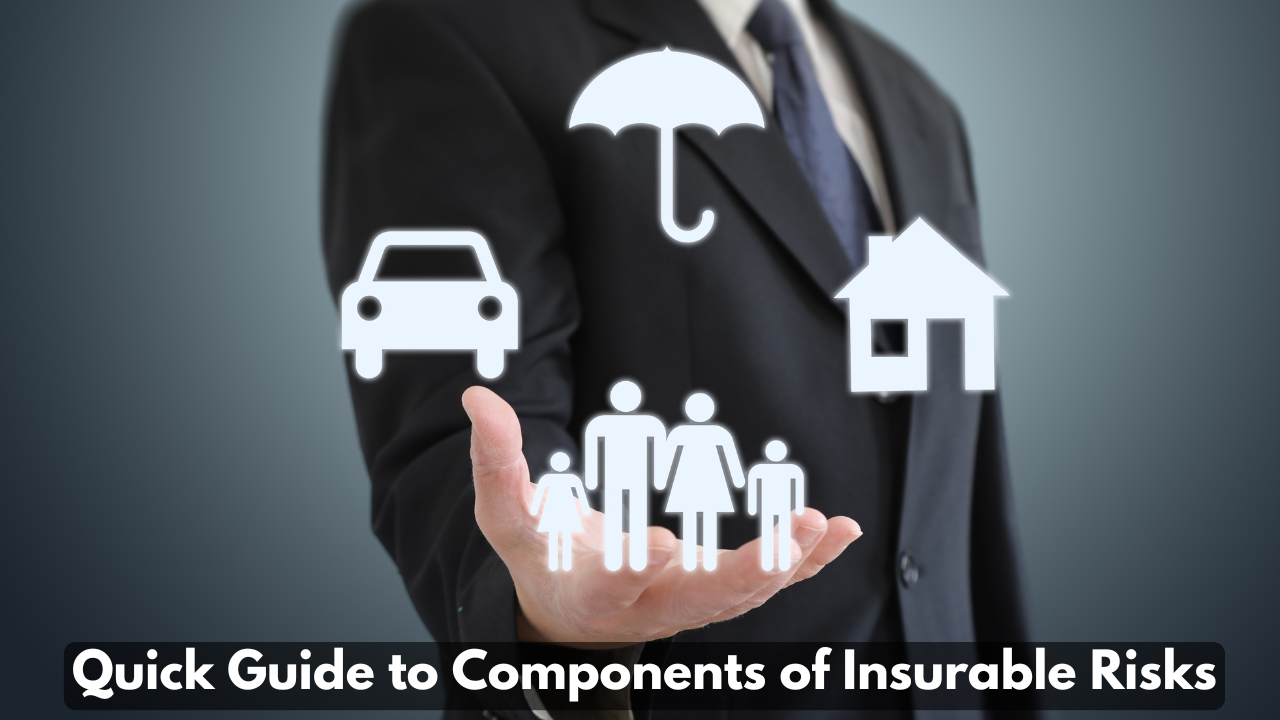Quick Guide to Components of Insurable Risks
 |
| Quick Guide to Components of Insurable Risks |
Insurance companies will not cover all potential risks. Most suppliers cover only pure risks, rather than speculative ones. Pure hazards encompass most or all of the major components of insurable risk. These features include "due to chance," definiteness and measurability, statistical predictability, the absence of catastrophic exposure, random selection, and significant loss exposure.
Understanding the components of insurable risk will assist you in determining which coverage is best for your situation—as well as making adequate strategies to protect your home, loved ones, and company.
Pure risk vs. speculative risk
Insurance firms often only indemnity against pure risks, also known as event risks. A pure risk is any uncertain scenario in which there is a possibility of loss but no possibility of financial gain.
Speculative risks, such as commercial initiatives or gambling transactions, have the potential to generate a profit or loss. Speculative risks lack the fundamental characteristics of insurability and are seldom covered.
Pure risks include natural disasters such as fires or floods, as well as mishaps such as a car accident or a significant knee injury sustained by a sportsperson. Most pure risks may be classified into three types: personal risks that influence the insured person's income-earning potential, property risks, and liability risks, which include losses caused by social interactions.
Because of chance
Insurable risks must have the possibility of accidental loss, which means the loss must be unintentional and unexpected in timing and severity.
The insurance business often refers to this as "due to chance." Insurers only pay out claims for losses caused by accident, although this definition varies by jurisdiction. It protects against deliberate acts of loss, such as a landlord burning down his or her own property.
Definitiveness and measurability
For a loss to be covered, the policyholder must be able to show indisputable proof of loss, frequently in the form of invoices in a specified amount. If the scope of the loss cannot be measured or properly specified, it is not covered. Without this information, an insurance company cannot determine a realistic benefit amount or premium cost.
For an insurance firm, catastrophic risk is defined as any significant loss that is regarded as too costly, widespread, or unexpected for the company to adequately cover.
Statistically predictable
Insurance is a statistical game, and insurers must be able to predict how often and how severely a loss will occur. Life and health insurance companies, for example, use actuarial science and mortality and morbidity data to forecast losses across populations.
Not catastrophic
Standard insurance does not cover catastrophic dangers. It may surprise you to find an exclusion for catastrophes mentioned among the essential features of an insurable risk, but it makes sense given the insurance industry's definition of catastrophic, which is sometimes shortened as "cat."
There are two types of catastrophic risks. The first occurs when all or many units within a risk group, such as policyholders in a certain class of insurance, are exposed to the same incident. This kind of catastrophic danger includes nuclear fallout, storms, and earthquakes.
The second type of catastrophic risk is any significant unanticipated loss of value that neither the insurer nor the policyholder expected. Perhaps the most well-known example of such a disastrous incident happened during the terrorist attacks in September.
Some insurance firms specialize in catastrophic coverage, and many engage in reinsurance arrangements to protect against catastrophic disasters. Investors may also buy risk-linked instruments, known as "cat bonds," which generate funds for catastrophic risk transfers.
Randomly selected with a large loss exposure
All insurance programs work under the law of big numbers. According to this rule, a sufficient large number of homogenous exposures to each single event are required to produce a fair forecast about the loss associated with that occurrence.
A second related criterion is that the number of exposure units, or policyholders, must be high enough to represent a statistically random sample of the entire population. This is aimed at preventing insurance firms from just dispersing risk among individuals most likely to make a claim, as could occur with adverse selection.
